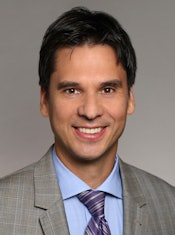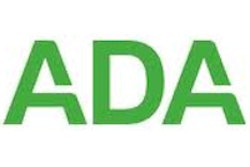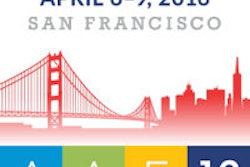
An oncoming data revolution, changes in higher education, and rising supply coupled with falling demand may all play into the future of dentistry, according to a discussion at the recent 2016 American Association of Endodontists (AAE) annual session in San Francisco.
 Marko Vujicic, PhD, chief economist and vice president of the ADA Health Policy Institute. Image courtesy of the ADA.
Marko Vujicic, PhD, chief economist and vice president of the ADA Health Policy Institute. Image courtesy of the ADA.The April 8 discussion featured Marko Vujicic, PhD, chief economist and vice president of the ADA Health Policy Institute, and Gerald Glickman, DDS, JD, chair of the department of endodontics at the Texas A&M University Baylor College of Dentistry. The two discussed four different trends poised to affect the future of dentistry:
- Rising supply and falling demand
- Trends for dental specialties
- Changes in higher education
- Upcoming data revolution
One of the trends already impacting the dental community is a rising supply of dentists but falling demand for dental care. Vujicic and Dr. Glickman predicted how that will affect general dentists and specialists.
"Is this going to rebound or is this the new normal?" Vujicic asked. "That's the million-dollar question."
Rising supply and falling demand
Beginning in the early 2000s, the number of adults visiting the dentist began to plateau and then decline, Vujicic explained. The change is not related to trends in the economy, he noted, but is slower, steadier, and longer term. The overall dental industry is experiencing more open chair time, more dentists, and lower earnings.
“Is this going to rebound or is this the new normal? That's the million-dollar question.”
"The demand to get into dental school is skyrocketing," Dr. Glickman said. "The kids out there who are looking at careers, they know that typically dentistry is going to give a good return on investment."
"I don't see anything major on the horizon that will all of a sudden push adults into dental care," he said. "You don't need a PhD in economics to know you have a rising supply and falling demand."
Vujicic believes that wages stagnating for the middle class plays a role in more adults not seeking dental care. Specifically, he said three major factors are impacting the rate of dental care utilization:
- Fewer adults have private dental plans, and those dental plans are covering less than they used to.
- Since the mid-2000s, there has been no growth in household income.
- Demographics are shifting to an increasingly Hispanic population, Vujicic noted. "All else equal, Hispanics use dental care at a lower rate than non-Hispanics," he said.
But Vujicic also said that perhaps another contributing factor is that the population's oral health is getting better, so there's less of a need for care. While oral health quality is hard to measure, he said that based on feedback he's heard from general dentists, he wouldn't be surprised if this is the case.
"General dentists say, 'I'm seeing less decay than 20 years ago.' ... I kind of buy that the population is getting healthier," Vujicic said. "My hunch is that this contributes to falling needs."
Trends for dental specialties
Rising supply and falling demand is also affecting dental specialties, including endodontics. For endodontics specifically, the number of procedures fell for a number years and then stabilized, and, unlike most other parts of dentistry, the share of the population who underwent an endodontic procedure is up slightly.
"When I look at the volume [not dollar amount] of dental procedures, and I break it up into major specialties, the general trend is away from restorative work and much more toward preventive work," Vujicic said.
The number of endodontic procedures being done by endodontists also is up. In 1990, 18% of all endodontic procedures were done by an endodontist, but by 2006, the year of the most recent available data, 25% of procedures were done by the specialists, according to Vujicic.
As for payment rates, the most commonly reimbursed endodontic procedures are for root canal treatments, specifically codes 3310 (anterior root canal), 3320 (bicuspid root canal), and 3330 (molar root canal). After adjusting for inflation, there were no changes in payment rates from 2005 to 2010, but after 2010, payment rates started to decline, which also happened throughout other dental specialties.
While reimbursement rates and fluctuating supply and demand affect dentistry's near future, part two of the series focuses on larger scale changes. Specifically, how an oncoming data revolution and changes within higher education as a whole might revolutionize the way dentistry is practiced.


















